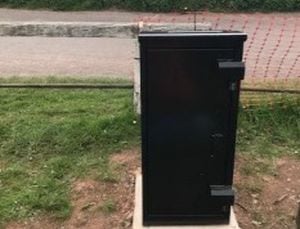Canal Trust applies to install high-tech water monitoring system on Wolverhampton lock
Wolverhampton's historic canal is set to get a high-tech water monitoring system.

Built by James Brindley in 1770, the canal helped power the industrial revolution in the Black Country and is still used by leisure boats after being renovated in the 1980s.
The River and Canals Trust have applied for planning permission to replace a new monitoring box on Lock 17 to ensure the right amount of water in the canal and to help flood prevention.
In a statement to Wolverhampton Council planning department the trust outlined its proposals.
"The trust is proposing to install a new monitoring device adjacent the lock and connected to the by-weir. One of the main components of a canal is water and one simple issue is keeping the canal network supplied with the right amount. When under construction rivers, lakes, streams, and springs were all utilised wherever possible to help maintain the levels of water.
"Controlling water all through the network is a continuous process. Control devices include by-weirs, sluices, and culverts to bring water into the system, and to take excess away (flood prevention)."
The new cabinet has been designed to be vandal proof and solar powered.
The statement added: "It would be a black, powder-coated metal cabinet approximately 968mm high. It is a small as possible to accommodate the amount of equipment within, and the solar panel sits on top for maximum efficiency (it is currently side-mounted).
"The kiosk is secured to a plinth to make it more robust given its position as an isolated unit, keeping it safe and resistant to any potential anti-social behaviour."
Lock 17 is one of 21 locks on the Birmingham Canal and is located near Oxley.
The lock is listed due to its historical significance and the trust promised the new cabinet will not look out of place or too modern.
The statement added: "All works will be guided by the principles of minimum intervention. From an aesthetic perspective the proposed would be an alteration as the cabinet is rectangular and its footprint slightly larger than the existing monitoring bollard.
"Nonetheless, the unit is set away from the main lock and sits unassumingly alongside the by-weir and would have a limited impact on the visual appearance of the listed lock."
The application will be approved or declined by Wolverhampton Council's planning committee in the coming weeks.





